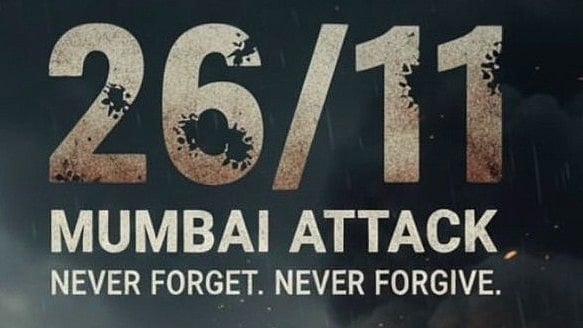17 Years After 26/11: A City That Remembers Even When It Doesn’t Speak
On the surface, everything looks ordinary. But when you walk through the places where that night unfolded, the air feels heavier, quieter, almost watchful. Mumbai is a city that does not announce its grief, yet carries it in unspoken ways.

17 Years After 26/11: A City That Remembers Even When It Doesn’t Speak |
Mumbai: Seventeen years after 26/11, Mumbai moves with its usual urgency, trains pouring into CST, the hum of taxis near Colaba, the steady rhythm of footsteps along the promenade. On the surface, everything looks ordinary. But when you walk through the places where that night unfolded, the air feels heavier, quieter, almost watchful. Mumbai is a city that does not announce its grief, yet carries it in unspoken ways.
At CST, the morning crowd flows in waves, determined and uninterrupted. Stand still for a moment, and the rush begins to feel different. The concourse that once witnessed panic is now lined with cameras, metal detectors, and guards who scan the crowd with instinctive precision. The people may have moved on, but the station itself seems to hold a memory quietly etched into its walls. The noise is familiar, the movement constant, yet the space remembers what the city rarely speaks about.
Outside the Taj Mahal Palace Hotel, the breeze from the sea is gentle, but the building rises with a different kind of stillness, one shaped by survival. The restored facade glows, the elegance remains untouched, but security here is not ornamental; it is lived. Guards straighten unconsciously, checks are quick yet meticulous, and every entry carries a reminder of the night when the unimaginable happened. The Taj looks whole, but the memory lives beneath the shine.
Standing near the hotel, 63-year-old photographer Lawrence S Dias, who has worked outside the Taj for 35 years, told us about the night that changed everything.
“I was working here in 2008 when the attack happened. I left at 9pm. I got to know about it from the news. My family was scared,” he recalled.
“I came back to work the very next day to see what was happening. NSG commandos and police were guarding the Taj. It was terrifying. But I knew I was safe because of our armed forces. You know, in Mumbai everything goes back to normal very quickly.”
That last line “everything goes back to normal very quickly” is perhaps the most defining truth of Mumbai.
In the narrow Colaba lane leading to Nariman House, life has resumed so seamlessly that the quietness feels almost out of place. Children play, shopkeepers sweep their fronts, neighbours chat across balconies. Yet the lane carries an echo, subtle but undeniable, of the fear that once gripped it. The modest memorial blends into the neighbourhood, but the story it holds lingers in the air.
Further ahead, Leopold Cafe buzzes with its usual mix of tourists, chatter, and clinking glasses. The bullet holes, preserved on the walls, stand as stark reminders, not dramatised, not hidden. If you pause long enough, the room shifts. The laughter seems a bit louder, the conversations a touch faster, almost as if people are unknowingly speaking over the silence of history. Leopold didn’t let fear define it, but it didn’t forget either.
Walking along the coastline, you are reminded that the night did not begin in the city, but on the water. Today, the sea looks peaceful, deceptively so. Patrol boats slice through the waves, radar towers watch the horizon, fishermen cast their nets with practiced ease. The vastness feels beautiful, but also a reminder of vulnerability of how the city learned to respect the silence of the sea.
Across Mumbai, what stands out isn’t fear or mourning, but a layered mix of resilience and alertness and a kind of acceptance. The city tightened its systems, expanded its surveillance, strengthened its responses. But emotionally, it did what Mumbai always does: it absorbed the shock, built over the cracks, and kept moving.
Residents echo this feeling. Raashi, a Byculla resident, said, “If Mumbai stands tall today, a big part of the credit goes to the uniform. After 26/11, the police didn’t just tighten security; they changed the mindset of the city. We know someone is always watching, always ready.”
Vidyut, a Colaba resident, added, “Colaba looks different today, not because the wounds healed, but because the system became sharper. You can see it in the way the cops stand guard; there’s a sense that they’re watching out for us.”
Seventeen years later, Mumbai doesn’t display its scars openly. It doesn’t slow its pace or rehearse its grief. But the memory lives in the longer pause of security eyes, in the hush of certain lanes, in the sturdiness of rebuilt walls, in the sea that meets the city’s edge.
You can walk past every site and see normalcy. You can feel everything underneath it.
ALSO READ
Mumbai may have healed on the surface, but it remembers in the details in its sounds, in its silences, and in the spaces that continue to hold the weight of a night the city will never fully leave behind.
And yet, true to Lawrence’s quiet wisdom, Mumbai does what it has always done: it returns to normal not because it forgets, but because it refuses to stop moving.
To get details on exclusive and budget-friendly property deals in Mumbai & surrounding regions, do visit: https://budgetproperties.in/
RECENT STORIES
-
-
-
-
-